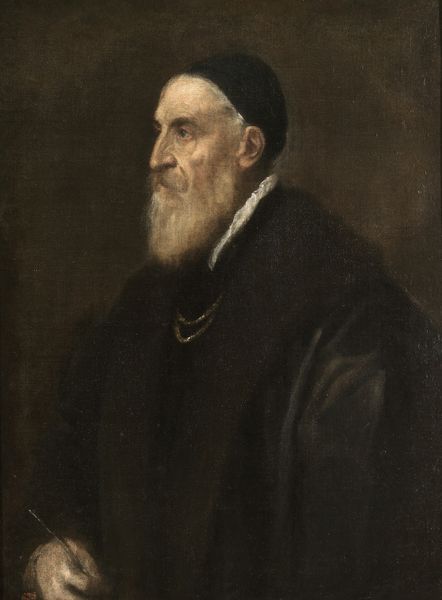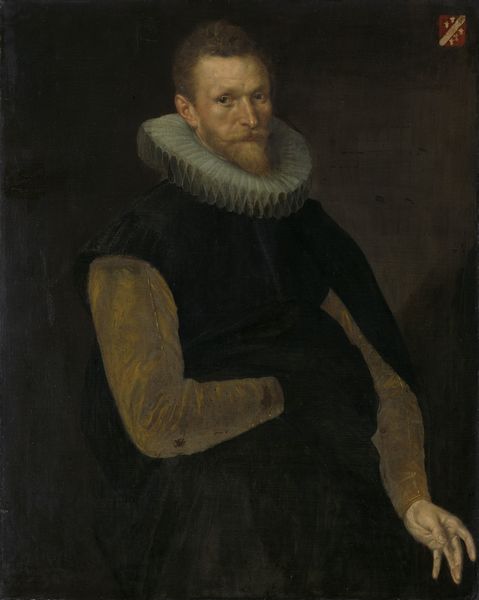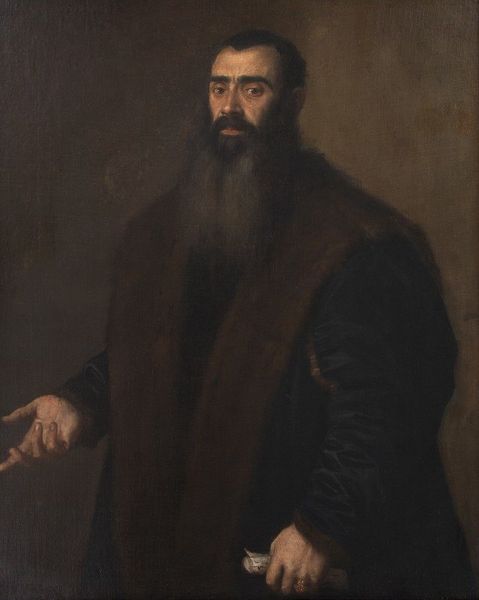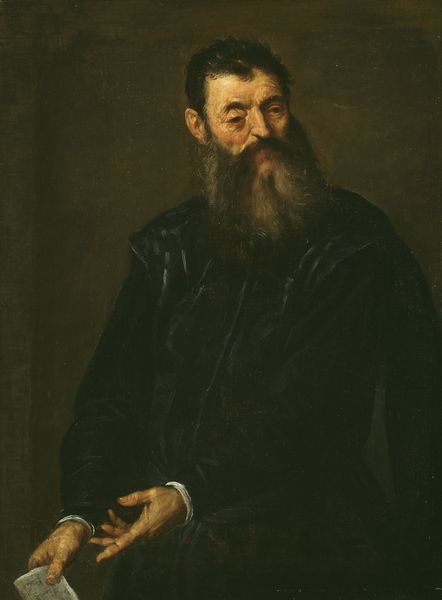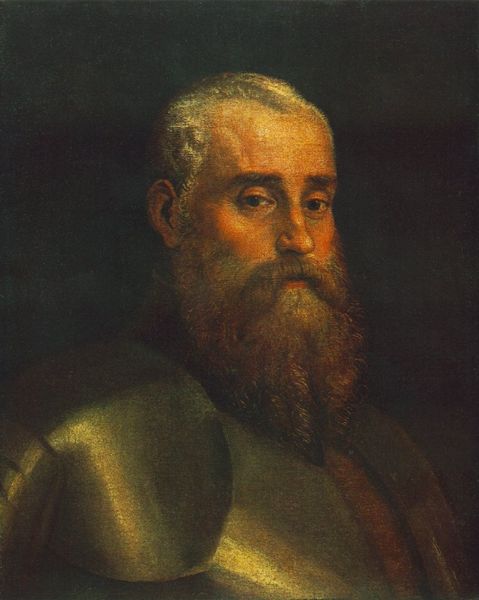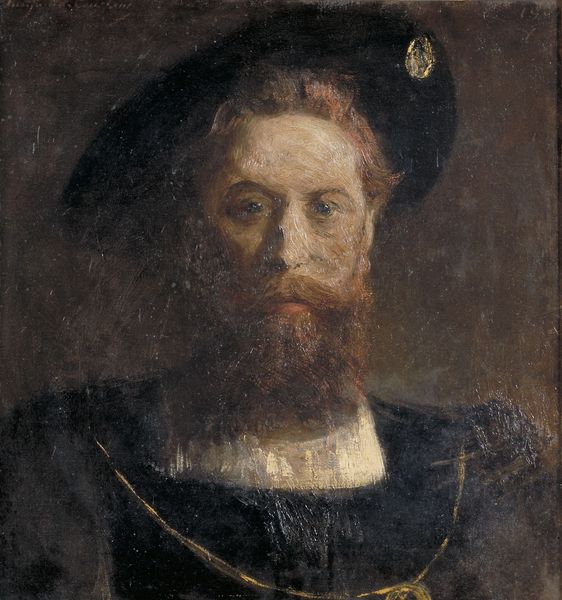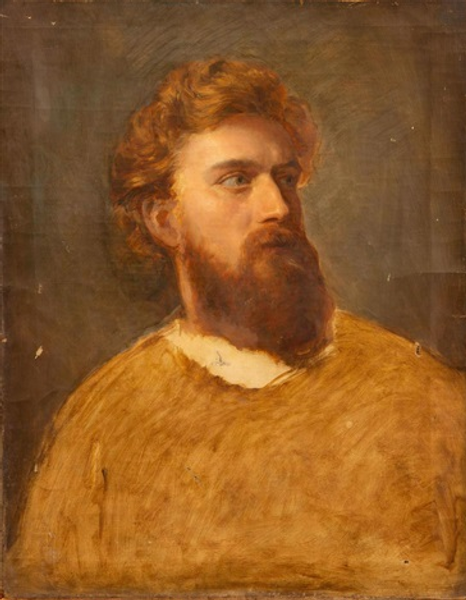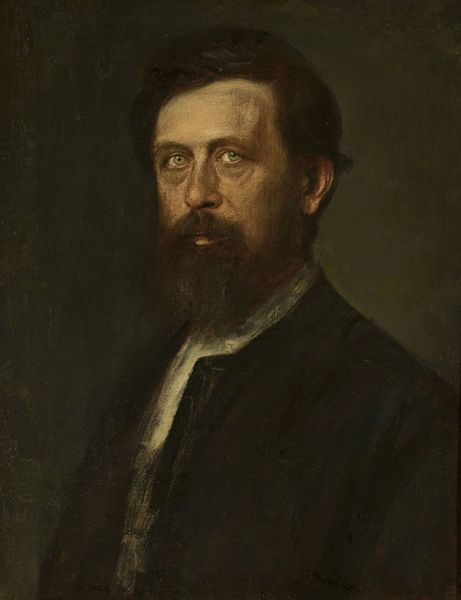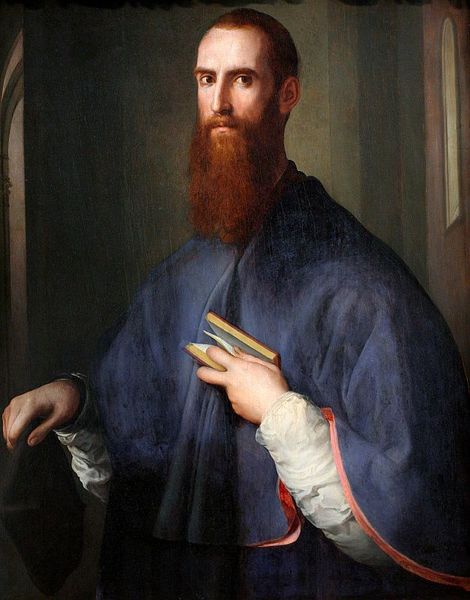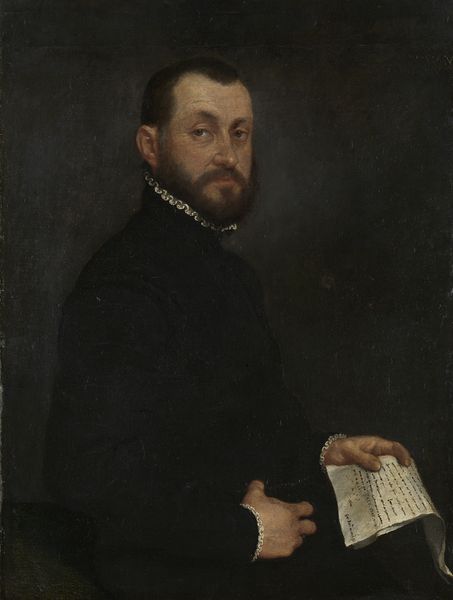
painting, oil-paint
#
portrait
#
venetian-painting
#
portrait
#
painting
#
oil-paint
#
history-painting
#
italian-renaissance
Dimensions: height 63.5 cm, width 57.5 cm, depth 9.5 cm
Copyright: Rijks Museum: Open Domain
Editor: This is Jacopo Tintoretto’s "Portrait of a Man," dating from 1550 to 1575, made with oil paint. The fur trim looks incredibly tactile. What stands out to you about the way this was produced? Curator: I’m immediately drawn to the materiality itself. Think about the pigment: where did Tintoretto source his colors? The reds, yellows, and browns, likely derived from minerals mined and traded across Europe. And consider the labor involved – not just Tintoretto’s own artistic application, but also the countless unnamed individuals involved in the mining, grinding, and processing of those pigments. The price for these raw materials? Editor: That's interesting. So, it's not just about Tintoretto’s individual skill, but also the economic and social structures that made this portrait possible. Curator: Exactly. Look at the fur – a status symbol dependent on trapping, trade routes, and the demand of the Venetian elite. The act of painting becomes a record of those transactions. We must ask: Who was this man in the painting? Why commission a painting at all? Editor: It sounds like even the subject matter connects to a whole system of production. Was this typical of Venetian portraits at the time? Curator: Venetian portraiture often served to advertise wealth and social standing, embedding the sitter within a network of mercantile exchange. The artist, essentially, became a manufacturer of status. Does understanding this material history affect your perception of the subject's gaze, his pose, the overall composition? Editor: Absolutely. I thought it was just a picture of a man, but seeing it this way, I notice so many levels beyond just who the painting represents! Curator: Yes. It allows us to appreciate art by seeing a relationship between production, making and what art means culturally.
Comments
No comments
Be the first to comment and join the conversation on the ultimate creative platform.
